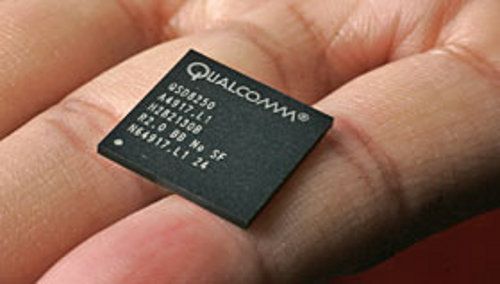Quad core. Snapdragon. Exynos. Intel. Qualcomm. Do any of these sound familiar? If so, it’s because you’ve been looking into the latest smartphones and scanning the specifications. However, do you know what any of it means? Chances are, you’ve found it a little confusing and you haven’t bothered to search further.
These names are just a few of the more popular types of smartphone processor chips and their manufacturers. Smartphones use a microprocessor because, well, they’re literally a computer in your pocket. Snapdragon dominates the phone chip market, but other companies, both well-known and not so well-known, also make chips. Following are four reasons to pick a smartphone with the best processor you can afford.
The Ability to Get the Job Done Is Important

Image via Flickr by doctorserone
The processor is connected to the motherboard, and the motherboard is connected to the LCD screen. Everything works in concert to bring you your expected smartphone experience: a rapid response to your touch and the quick loading of apps. All of this is accomplished through the processor. A processor with a quad core, or four cores, lets you do multiple things at once. For example: You make a phone call and while you’re on the call, you decide to play a game. Two cores rise to the occasion, powering both apps equally. You’ll never notice, because everything works as it should.
Some cell phones now have chips that are called octacore, or eight cores. These chips are blazing fast, but the phone needs to have the ability to take advantage of all of that processing power. If the software on the phone can’t use that power, it’s not worth shelling out the extra money to get the phone.
The More Bits There Are, the Better
Terms like “32-bit” and “64-bit” are bandied around quite a lot, but seldom does anyone explain why one is better than the other. Bits are part of computer architecture that help a processor run the numbers, so to speak. The higher number of bits lets a processor access the memory more quickly than a lower one. The computing world saw the rise of 64 bits back in the early days of computing, but it’s only recently that it’s reached cell phones. A good example for the combination of a high-end processor with 64 bits is the Samsung Galaxy S7. When you open up an app on the Galaxy S7, it rapidly springs to life on the screen and operates with very little lag time.
Faster Clock Speed Means Less Waiting
The words “clock speed” may not make sense to the average consumer. The term tends to conjure up the image of a clock that runs fast rather than the speed of the processor. Clock speed refers to how fast the processor is able to process instructions. For a cell phone user, that means how fast the processor opens the app from the moment the user taps the icon. It goes like this: the user taps the icon and the request to open the app gets sent to the processor. A processor with a fast clock speed opens the app much more rapidly than one with a slower speed.
Better Graphics Processing Means Better Visuals
Smartphones are pure GUI, or graphics user interface. When the phone is turned on, the graphics chip draws the screen and puts everything where you expect it to be. You tap an app, the processor opens it, and the graphics chip displays the program on the screen. While a majority of the processors and graphic chips on the market today do a fine job of immediately displaying information on the screen, there is always room for improvement. Faster chips mean better gameplay and visualization, the ability to view videos in their full high-resolution glory, and no lagging during streaming due to a chip that can’t keep up.
It’s always a good idea to do research on the processor that comes in any given phone, and it’s reasonable to expect to pay more for a fast, high-quality processor. Make sure that the phone comes from a high-quality brand and has software that can take full advantage of its processor’s performance.

